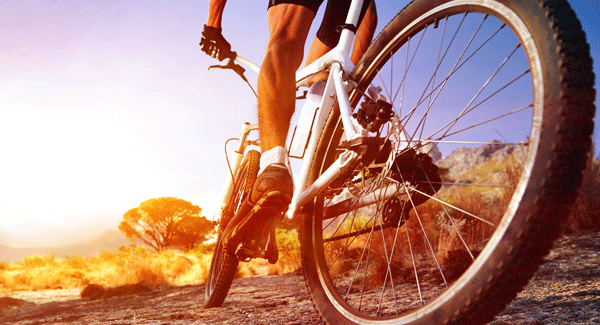Essential Bike Accessories
Learn how to protect your joints by choosing the right bike accessories for comfortable and safe riding.
By Ellen Fix
Whether for short workouts through the neighborhood, quick trips to the store or commuting to work, having the right bike accessories can enhance your riding comfort and your safety. Your local bike shop can help outfit you and your bike with this smart safety gear. Start with these tips to help you learn how to properly support your riding and your arthritis.
Get a Grip
Y-shaped handlebars, known as riser bars, let you sit taller, reducing strain from leaning forward. A wide handlebar grip, such as Ergon bike grips (ergon-bike.com) provides a more even distribution of pressure across the width of your hands.
Protect From Head to Toe
Helmets are a necessity. A comfortable fit is also important. Choose a helmet that offers an adjustable fit with lots of padding and ventilation. Many now offer anti-concussion technology to reduce risks of concussion in an accident.
Gloves protect your hands, help reduce vibration and prevent sweaty hands from slipping. Try gloves infused with gel for maximum protection, such as Pearl’s Pittard (pearlizumi.com). For feet, a lightweight, flexible hiking shoe is better bicycling wear than a flimsy or stiff gym shoe. Feet also benefit from larger pedals, which require you to exert fewer pounds per square inch for movement.
Gain a Full View
A small rear-view mirror, mounted to your helmet, the bow of your eyeglasses or your handlebars, can help you avoid accidents by giving you side and rear views without having to turn your head.
Widen Wheels Wisely
Wider wheels absorb more of the jarring from bumps and holes in the road, but narrow wheels require you to expend less energy to propel the bike. A happy medium, such as a 1-1⁄2-inch tire, is best.
Cushion the Curb
Front fork and seat post suspension – like those featured on many mountain bikes and hybrid bikes – can significantly reduce shock from bumps, so your joints don’t take the brunt of the ride. Padded bike shorts provide cushion in just the right place, as well as wick moisture and help prevent chafing. If chaffing does occur, chamois cream lubricant slathered directly on body parts that experience the most pressure at the seat (such as the groin) can help you counter the rubbing that can lead to an irritating, if not painful, burn.
Saddle Up
Choose a gender-specific, gel-padded bike seat, known as a saddle in cycling circles. When trying a saddle, most of your weight should be on your “sitz” bones (the ischial tuberosities), which are located at the very base of the pelvis. Saddles with a notch forged in the center reduce pressure on the crotch. A seat that is too narrow causes your behind to settle around it rather than on it, causing painful contact pressure in the crotch. This is a particular problem with upright handlebars, when most of your weight is on the seat. A saddle that is too wide with bulky padding can cause thigh chafing on longer rides and add pressure on the body toward the nose of the saddle. Most seats are fully adjustable and getting the right position is critical, says David Maxwell, manager of District Hardware/The Bike Shop in Washington, D.C. “Angle the nose of the seat down so part of your weight rests on the handlebars, with your pelvis at a slight forward lean,” he says.
Get in Gear
Changing gears allows you to pedal at the same number of revolutions per second, despite terrain, to maintain your speed. Make sure your bike offers plenty of gears – five or more is optimal – especially if you plan to ride hills.
Hydrate Often
A special attachment for your bike, known as a water bottle cage, keeps water bottles within easy reach. Hydration backpacks, such as a Camelbak (camelbak.com), let you wear your water and provide easy access via a hose, so you can drink hands-free while you ride. Many hydration packs also have small cargo pockets to stash your car keys, spare tire tubes, a bike pump and more.

Carolina Hills Classic

Stay in the Know. Live in the Yes.
Get involved with the arthritis community. Tell us a little about yourself and, based on your interests, you’ll receive emails packed with the latest information and resources to live your best life and connect with others.


